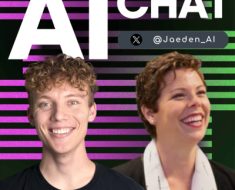AI has changed the way we interact with technology, from chatbots to content creation tools. At the heart of this change is something called an LLM—short for “Large Language Model.” This article looks into what LLMs are, how they work, and answers some of the most common questions people ask about them.

What Does LLM Mean in AI?
LLM stands for “Large Language Model.” These are advanced AI systems trained on massive amounts of text data to understand and generate human-like language. They’re like digital encyclopedias that can summarize, analyze, and even create new text. For example, ChatGPT uses an LLM to assist with writing tasks. Google Gemini leverages LLM technology to provide detailed answers to user queries¹.

What Is the Difference Between GPT and LLM?
All GPT models are LLMs, but not all LLMs are GPTs. GPT, or Generative Pre-trained Transformer, is a type of LLM known for creating coherent, contextually relevant text. Think of it this way: LLMs are a broad category of AI models designed to process and generate text. GPT models, such as ChatGPT, are a specific type of LLM that specializes in conversational and creative text generation².

What Is the Difference Between NLP and LLM?
Natural Language Processing (NLP) is the broader field of study, while LLMs are a specific implementation within that field. Here’s an analogy: NLP is like a cookbook that provides machines with the essential recipes to understand and process language. LLMs, on the other hand, are the skilled chefs who take those recipes and apply them to perform various tasks, such as text analysis, translation, or engaging in conversation³.

Is ChatGPT an LLM?
Yes, ChatGPT is an example of an LLM. It’s based on OpenAI’s GPT architecture, designed to handle advanced language tasks like answering questions, writing content, and simplifying complex ideas¹.

What Does LLM Stand For?
LLM stands for “Large Language Model,” emphasizing its ability to process and generate extensive text data.

What Is Generative AI vs. LLM?
Generative AI refers to any AI system capable of producing content—whether that’s text, images, or music. LLMs are a subset of generative AI specifically focused on generating text. For instance: Generative AI includes tools like DALL-E for images or LLMs for text. LLMs handle tasks like drafting emails, answering questions, or summarizing articles⁴.

Is GPT a LLM?
Yes, GPT (Generative Pre-trained Transformer) is a type of LLM. It specializes in generating human-like text and excels in creative and conversational tasks².

What Is LLM in Chatbot?
In chatbots, LLMs serve as the “brain,” enabling them to understand and respond to user inputs naturally. For example, ChatGPT uses an LLM to craft contextually relevant replies in real time¹.

What Is an Example of an LLM in AI?
Examples of LLMs include GPT-4 (OpenAI), which powers ChatGPT for creative and conversational tasks; Gemini (Google), which integrates with search to provide detailed answers; and LLaMA (Meta), which is used for research and AI advancements⁵.

What Does GPT Stand For?
GPT stands for Generative Pre-trained Transformer, highlighting its ability to generate text (Generative), its extensive training on text data (Pre-trained), and its architecture (Transformer)⁶.

Source: https://brand.mit.edu/logos-marks/logo-lock-ups
What Does MIT Stand For in AI?
In the context of AI, MIT typically refers to the Massachusetts Institute of Technology, a leading institution in AI research and development⁷.

What Is the Key Role of LLM in Generative AI?
LLMs play a central role in generative AI by focusing on producing high-quality text. They power applications like chatbots, content creation tools, and automated translation⁸.

Source: Photo by Levart_Photographer
Which Company Made ChatGPT?
ChatGPT was developed by OpenAI, a research organization focused on creating and promoting friendly AI⁶.

Which Framework Is Best for Deep Learning?
Popular frameworks for deep learning include TensorFlow, valued for its scalability and flexibility, and PyTorch, known for its ease of use and dynamic computation graphs⁹.

Is LLM an AI?
Yes, an LLM is a type of AI specifically designed to understand and generate human-like language, making it a key component in many modern AI applications¹.
Key Takeaways

- LLM: Stands for Large Language Model, a powerful AI for processing and generating text.
- GPT: A type of LLM focused on creating conversational and creative text.
- Generative AI vs. LLM: LLMs are a subset of generative AI, specialized in language tasks.
- Practical Examples: Tools like ChatGPT and Google Gemini rely on LLMs.
Conclusion: Why Understanding LLMs Matters

LLMs are changing the way we interact with AI, powering tools that make life easier and more efficient. From ChatGPT to advanced search features, their influence is everywhere. As AI continues to evolve, understanding LLMs helps us better appreciate the tools we use daily.
Citations
1. Amazon Web Services. “What is LLM? – Large Language Models Explained.” AWS. Accessed 2 Dec. 2024.
2. DataCamp. “What is an LLM? A Guide on Large Language Models and How They Work.” DataCamp. Accessed 2 Dec. 2024.
3. Timbó, Rafael. “NLP vs. LLM: Key Differences and How They Work Together.” Revelo Blog, 2 July 2024. Accessed 2 Dec. 2024.
4. McKinsey & Company. “What Is Generative AI?” McKinsey Explainers, 2 April 2024. Accessed 2 Dec. 2024.
5. Meta AI. “Large Language Model LLaMA: Meta AI’s Latest Advancement.” Meta AI Blog, 2024. Accessed 2 Dec. 2024.
6. OpenAI. “Models Overview.” OpenAI Documentation, 2024. Accessed 2 Dec. 2024.
7. MIT Media Lab. “Research: Artificial Intelligence.” MIT Media Lab Research, 2024. Accessed 2 Dec. 2024.
8. Sandhu, Jamie A. “Generative AI and Large Language Models: An Explainer.” Schwartz Reisman Institute for Technology and Society, 25 Jan. 2024. Accessed 2 Dec. 2024.
9. Kurama, Vihar. “PyTorch vs. TensorFlow: A Head-to-Head Comparison.” Built In, 23 Oct. 2024. Accessed 2 Dec. 2024.
Please note, that the author may have used some AI technology to create the content on this website. But please remember, this is a general disclaimer: the author can’t take the blame for any mistakes or missing info. All the content is aimed to be helpful and informative, but it’s provided ‘as is’ with no promises of being complete, accurate, or current. For more details and the full scope of this disclaimer, check out the disclaimer page on the website.





